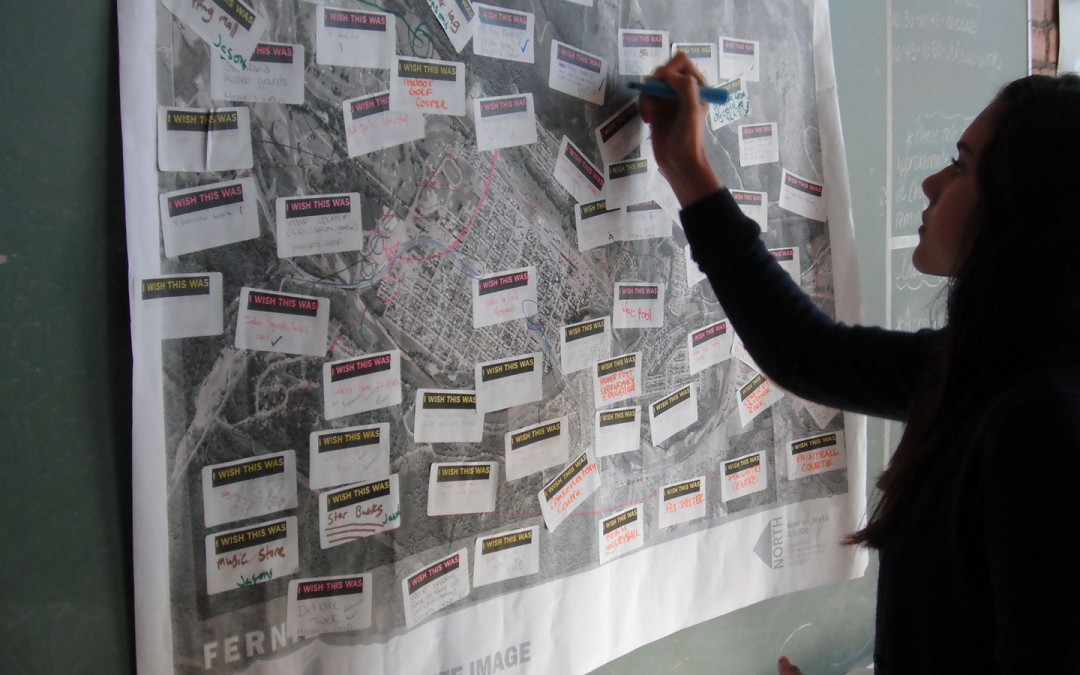 Have you wanted to design a meaningful engagement process for a controversial community issue but don’t know how to make sure you hear from everyone?
Have you wanted to design a meaningful engagement process for a controversial community issue but don’t know how to make sure you hear from everyone?
Our recent experience designing and facilitating a public event for the Village of Pemberton regarding the concepts for the controversial Pemberton Creek Community Power Project confirmed a number of things for us about the need for careful design of public engagement processes. Here are five tips to keep in mind.
1. Be spacious – Use a big room, disperse the crowd and keep the room cool.
For the Pemberton event we used the school gymnasium and kept the doors open as much as possible to keep the room cool and allow fresh air in. Each concept up for review and input was hosted at a station and the stations were dispersed around the room, giving the 180 people space to breathe, move and mingle.
 2. Be brief – Keep your introduction brief and allow people to leave when they need to.
2. Be brief – Keep your introduction brief and allow people to leave when they need to.
The trick here is balance. It’s important to provide the information necessary for participants to be informed and understand the issue and event process, while not frustrating them with too much talk. Keeping the presentations brief also helps move the focus from the large group where the vocal crowd has an audience, to a space where all participants can provide input and ask questions. Lastly, design a process that allows participants to attend the event briefly if that’s all the time they have. In Pemberton, we created a process whereby people could provide input slowly or quickly and then leave whenever they felt they were finished.
3. Be visual – Gather the input transparently and in real-time if possible.
The use of large posters, coloured sticky notes and dots for rating options made the process that evening open and transparent – everyone was able to see the posted results as they went up, even from across the room. So while the format didn’t provide the opportunity for people to vocalize their views for all to hear, it did allow views to be clearly displayed for all to see.
 4. Be inclusive – Provide multiple options for input as well as an open, non-structured area.
4. Be inclusive – Provide multiple options for input as well as an open, non-structured area.
Participants could provide their input either publicly/visually on the posters using coloured sticky notes or more privately on worksheets provided at each station. This gave participants different input options to suit them. In addition, we provided an ‘open’ station for feedback that was completely free-form, helping to ensure people didn’t feel constrained by the event process.
5. Be neutral – And if you can’t be neutral, then hire facilitators who can be.
As with any engagement process, facilitating from neutral territory is critical, so if you/staff are not perceived as neutral (even if you are), then consider hiring independent facilitators to lead the process for you. And lastly, listen carefully to understand when you are receiving comments and concerns from participants to try to get at some of the underlying concerns that may influence people’s feedback.
What the event couldn’t do
The downside of the format we used is that the input received was high-level only, capturing the initial reactions people had to the concepts without the benefit of understanding the rationale behind their views and being able to probe further and ask questions to deepen our understanding of the input received. Further, the event only gathered input from those who could attend and therefore may not reflect the views of the full diversity of Pemberton and area residents. As with any public engagement process, an event should be just one part of the overall strategy, which might also include such techniques as in-depth focus groups, facilitated conversations and broad surveys of the population.
To view the summary document of the event, including the the public input gathered, click here.
If you’d like to discuss these ideas further, please contact Cheeying Ho at cho[at]whistlercentre.ca or 604.388.8421

